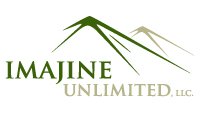Leadership is the capacity to create something of meaning and align values and actions across groups of people or communities. It is about relationships among people and how they support, complement, and supplement each other and the broader ecosystem.
– Aja Couchois Duncan, Susan Misra and Vincent Pan
Leadership is about connecting people together to achieve something greater. Nature can teach us a lot about this. My husband is a fisheries and wildlife biologist. I enjoy hiking with him. He is like having “Siri” in person on a hike with me to explain the deeper community in nature that is below the surface of what I see. He will show me how a non-native plant that was planted unknowingly has changed a whole system of where native plants can no longer grow. It in turn can have ramifications on other plants and animals.
Leadership has this similar power. As leaders, we can become focused on our specific goal or niche, but lose sight of how our mission is connected to something much bigger. It is when we see the larger system and engage with it that greater movements of change can happen. The Nonprofit Quarterly recently published an article called, Cultivating Leaderful Ecosystems. In this article, the authors describe five leadership “nutrients” that can nurture such leadership. Below are three beneficial tips that can help us to be more effective, and we will share the other two tips in a following article.
Leadership Engages the Broader System
As leaders, we have a mission, but do we share it with others? As an individual, you may have a passion for making something better. You put time, effort and energy towards your goal, and you see some progress. But, at some point, you realize that your sphere of impact is limited as one person. So, you grow a team, which then multiplies the efforts of your mission. You build an organization to bring structure and focus. We see some success towards our mission, but we often stop here.
Social change is a complex issue. Sometimes we allow our organizational structure to keep us from expanding to create a much more impactful change in a larger ecosystem. Greater change happens when we expand outwards into further networks of people. We must go beyond our organizational walls, not seeing others as competition, but as allies on the same mission. This is leadership being multiplied to a new level.
To be effective at this level, we need to reach out to new relationships and listen. What mission, vision and values do we share? What new perspective can we see from others and that can help us be better? How can we join together and make a bigger change?
Leadership that Intentionally Builds Relationships to Embody Equity
Sometimes leadership can be ego-driven. In our culture, we tend to magnify charismatic leaders and can have a “hero” focus. This can drive leaders to push for results because they are seeing their significance in what others see them as accomplishing. But, this kind of mindset stands as a huge barrier to an ecosystem of leadership.
Jim Collins in his book, Good to Great, discusses that your most successful organizations have “Level 5 Leadership.” These are leaders who channel their ego and ambition away from themselves and instead into building a great organization. I believe that Level 5 leaders can go a step beyond this by also channeling their ambitions into building a great community (ecosystem) of leadership.
To do this we need to value people from a variety of backgrounds, organizations, etc. We need to see the people as people and not as services, tasks or labels. When we do this, we engage better, we listen and see new solutions.
Leadership is Flexible
We tend to be most familiar with hierarchical leadership models. If you look at most organizational charts, what you will see is a leader at the top with tiers of more people leading other people downward. This model can be effective but also can have its limits. It tends to produce more of a top-down control with everyone looking above them for direction. It can produce more efficiency and direct results, but also limit creativity and innovation.
Nature is very creative and innovative. Organisms flow like a dance with each other in a system that collaborates and responds to growth and change. Leaderful ecosystems also need collaboration and flexibility. Leaders need to be a facilitator among colleagues. This allows us to look for new solutions that go beyond what we have always done. However, there are also times when a clear solution is seen that we must move with directive leadership.
So a skilled leader is one who can move between collaborative/ facilitative leadership and directive leadership. They know the appropriate times of when to use each and keep the overall system flexible.
How will you apply a leaderful ecosystem today? Leadership is about people. It is about building relationships with shared values to reach a greater mission. How will you challenge yourself to go beyond your comfort zone and create greater change as a leader?
